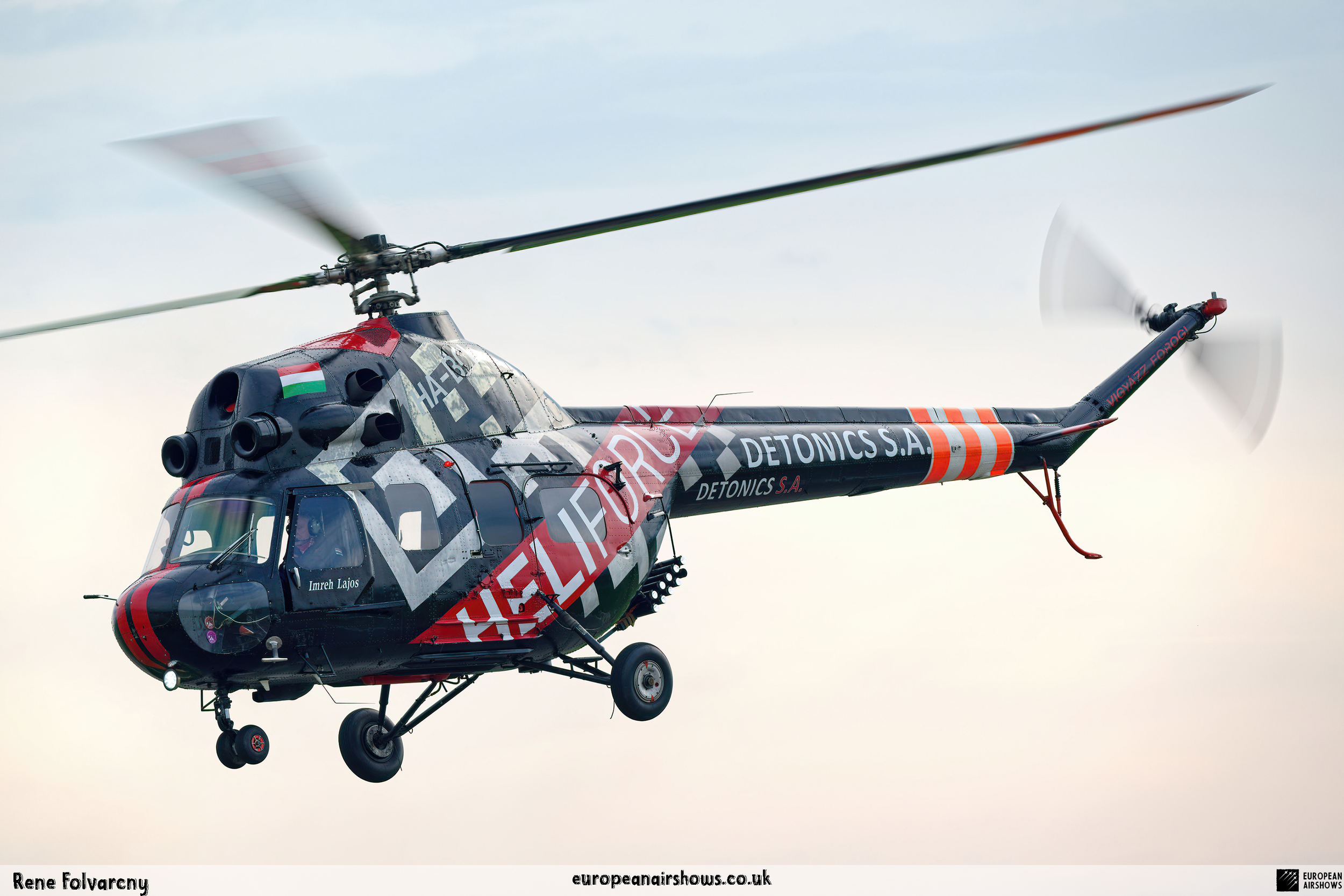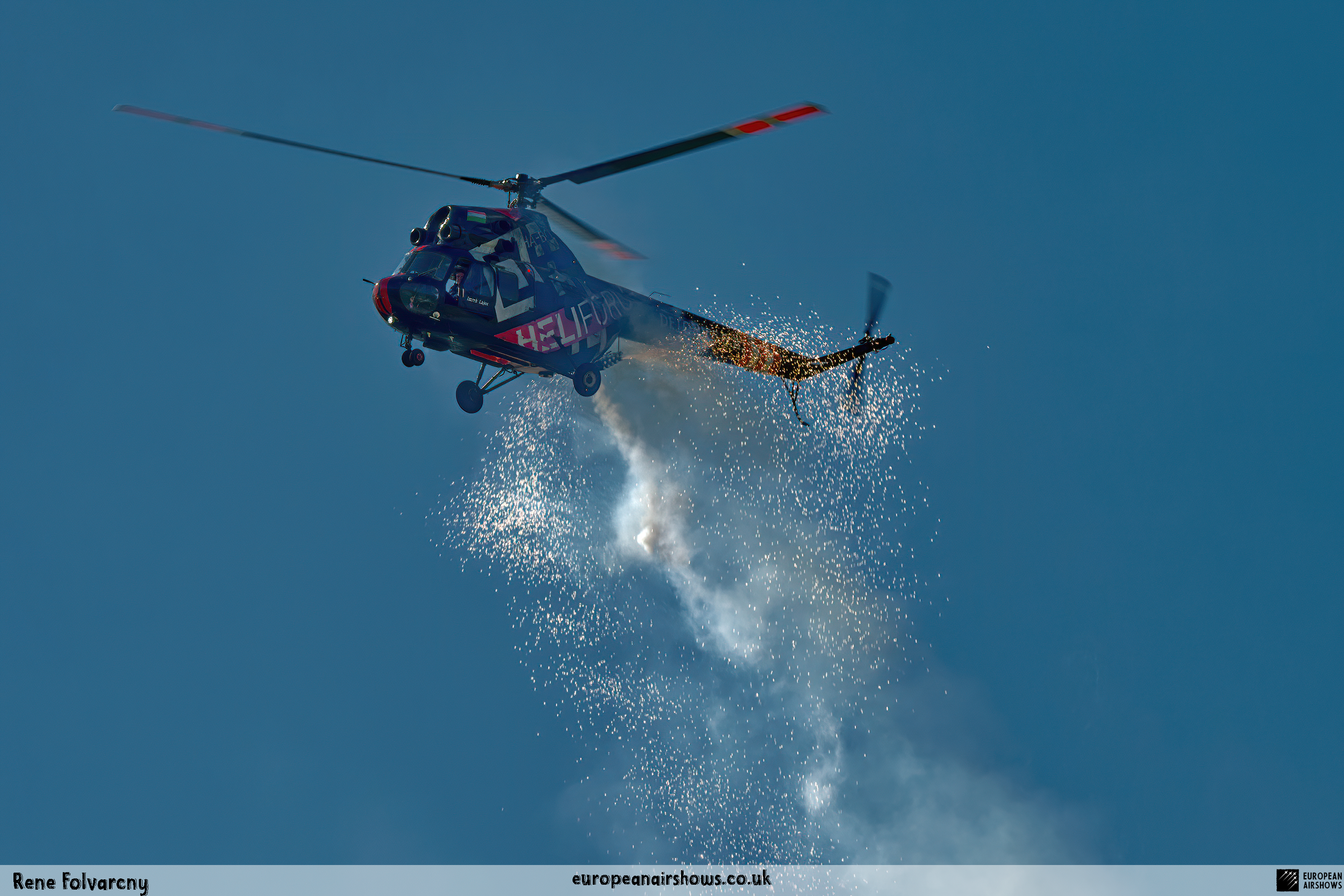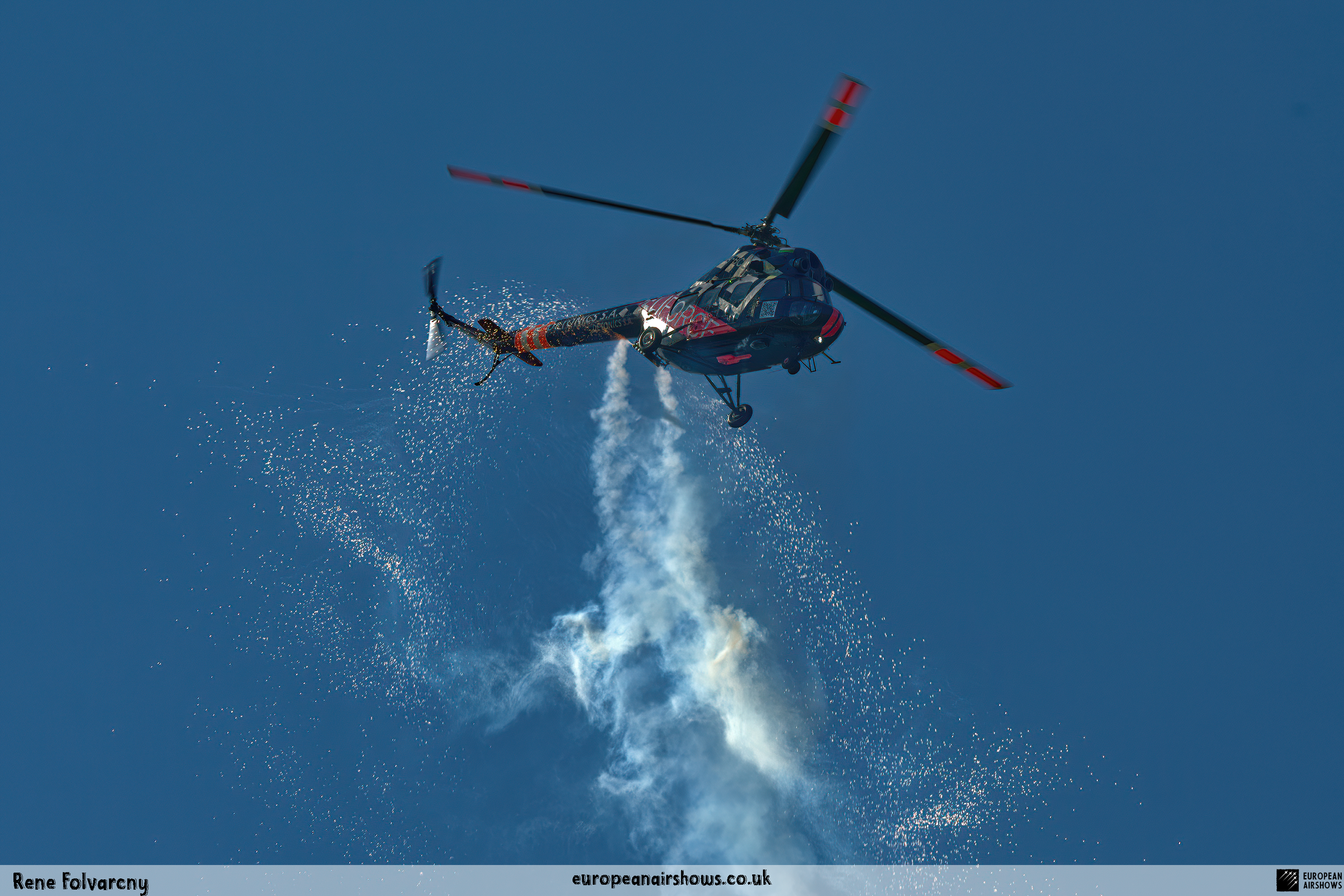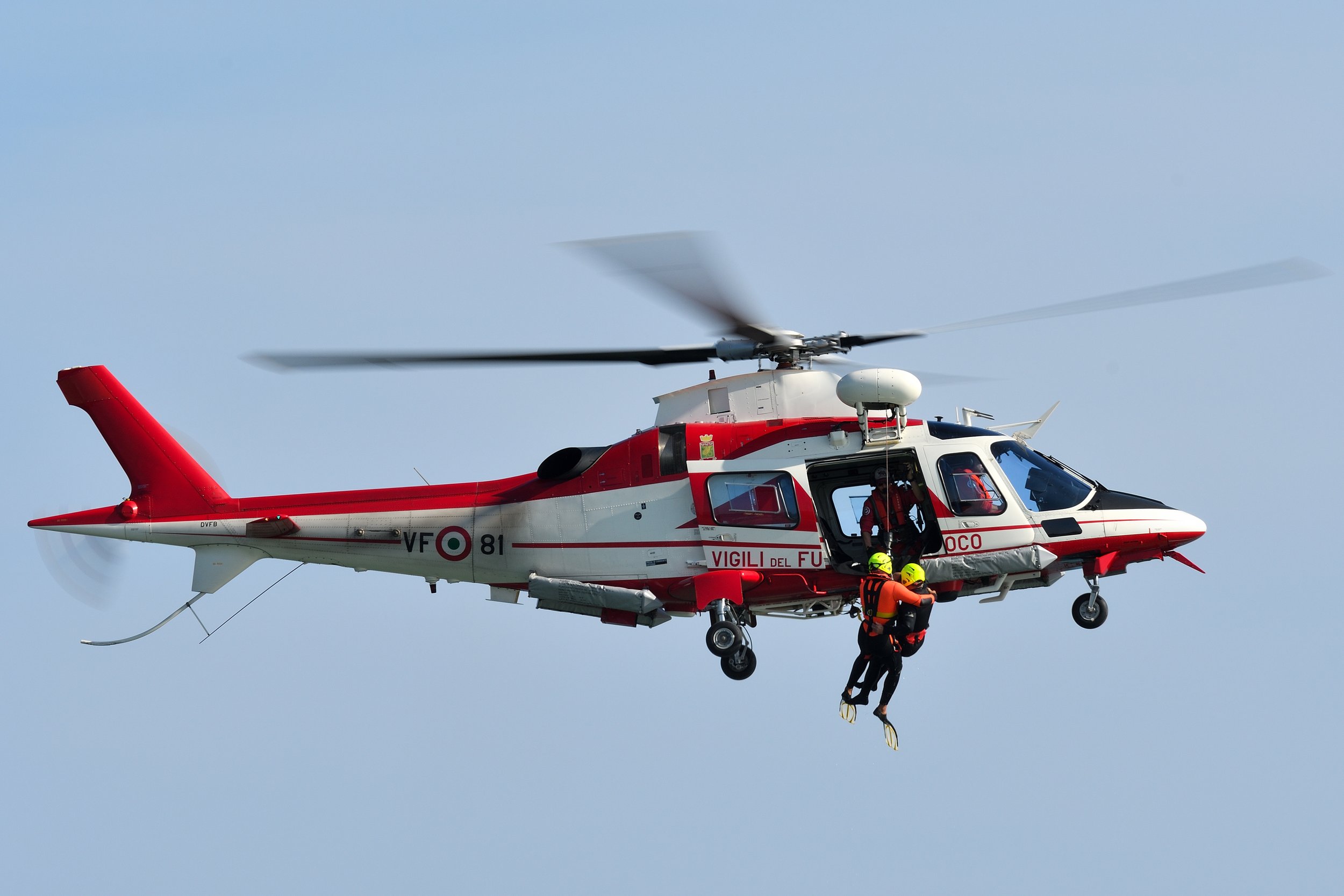HeliForce Mi-2
Country
Hungary
Aircraft
Mi-2
Base
Kiskunlachaza Airport
Mil Mi-2
The Mil Mi-2 (NATO reporting name Hoplite) is a small, lightly armed turbine-powered transport helicopter that could also provide close air support when armed with 57 mm rockets and a 23 mm cannon.
The Mi-2 was produced exclusively in Poland, in the WSK "PZL-Swidnik" factory in Swidnik.
The first production helicopter in the Soviet Union was the Mil Mi-1, modelled along the lines of the S-51 and Bristol Sycamore and flown by Mikhail Mil's bureau in September 1948. During the 1950s it became evident and confirmed by American and French development, that helicopters could be greatly improved with turbine engines. S. P. Isotov developed the GTD-350 engine and Mil used two of these in the far superior Mi-2.
The twin shaft-turbine engines used in the Mi-2 develop 40% more power than the Mi-1's piston engines, for barely half the engine weight, with the result that the payload was more than doubled. The Mi-2 fuselage was extensively altered from its predecessor, with the engines mounted overhead. However, the external dimensions remained similar.
The Mil-built prototype first flew in the Soviet Union on 22 September 1961, after the initial development the project was transferred to Poland in 1964. The first Swidnik-built example flew on 4 November 1965 (making this the only Soviet-designed helicopter to be built solely outside the Soviet Union). PZL-Swidnik produced a total of 5,497 helicopters, about a third for military users. The factory also developed fibreglass rotor blades and developed the wide-body Mi-2M seating 10 passengers instead of eight. Most typical role-change kits include four stretchers for air ambulance usage, or aerospraying or crop-dusting applications.
In Poland, several specialized military variants were also developed for support or reconnaissance roles, with 23 mm autocannon, machine guns and/or two 57 mm rocket pods, four 9K11 Malyutka anti-tank missiles or Strela-2 AA missiles
| Back to Top |



| Back to Top |

































